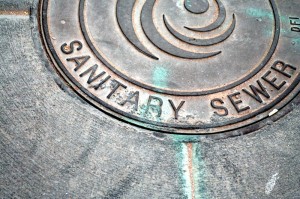New Jersey Future Blog
New Sewer Service Maps Will Support Responsible Development, Water Protection
July 17th, 2012 by Chris Sturm

Source: Flickr user -luz-
After four years, all counties have submitted critical plans that will dictate growth patterns.
In a win for responsible economic development and clean water, the state Department of Environmental Protection has announced that that Sewer Service Area (SSA) plans have now been submitted from all 21 counties. The plans show locations where more intense growth may occur – near infrastructure and away from areas with significant environmentally sensitive features such as wetlands, stream corridors and plant and animal habitat. The county plans are expected to be adopted formally by the DEP over the coming months through a process involving public notice and input.
This updating of New Jersey’s SSAs will represent a real milestone. Where sewers go, development follows, so the updated maps will provide key guidance for the State Strategic Plan and other responsible blueprints for economic growth at county and municipal levels.
The proposed new SSAs remove a total of over 200,000 acres of environmentally sensitive lands from future sewer service, as well as adding in new growth areas such as Ocean County’s New Egypt town center and Roosevelt City. In some counties, much of the removed lands was already publicly owned and permanently preserved (67 percent in Somerset County and 25 percent in Ocean County). New Jersey Future’s fact sheets provide details on three early county wastewater proposals, showing the net change in sewer service areas, in both in the number of acres and as a percentage of the total.
In most parts of the state, SSAs have been out-of-date for years. Developers, environmental advocates, municipal and county officials and affected property owners have all struggled to resolve conflicts throughout the lengthy update process, so this updating of New Jersey’s SSAs will represent a real milestone. As our materials on Water Quality Management Planning explain, where sewers go, development follows. The updated maps will provide key guidance for the State Strategic Plan and other responsible blueprints for economic growth at county and municipal levels. The final plans can be adjusted further through a “site-specific amendment” process.
Up-to-date SSA maps will help the public and private sectors plan for growth. Not only will there be transparency about where sewers can be extended, but it will be possible to pinpoint locations that require investments in wastewater infrastructure capacity before development or redevelopment can occur. Helping municipalities adopt plans that direct growth to sewered areas will allow them to manage costs while protecting the environment. And for areas that won’t be sewered, where sprawl development has been a real threat, attention can now be turned to protecting water quality.
New Jersey Future commends the county planning boards and their staffs and the DEP’s Division of Coastal and Land Use Planning for reaching this point in what has been an ambitious and difficult four-year process. We look forward to seeing the new plans take effect, once they are formally approved by the DEP.

















Great news! I have a friend with prime property near the train station and no sewer hook-up! It is time to make a plan that steers growth the right way!
“As our materials on Water Quality Management Planning explain, where sewers go, development follows.” Why are 47 Pinelands Villages, covering 26,000 acres in the Pinelands National Reserve, now being forced into Sewer Service Area? There is no legal obligation for Village inclusion, yet the Pinelands Commission (in error) argues otherwise. While the CMP permits sewering, it does not require it. What is NJ Future’s view on this issue?
The Pinelands Commission’s states that “all areas certified by the Commission as … Pinelands Villages must be included, in their entirety and without any exceptions, within the County’s SSA/FWSA.” The Pinelands Preservation Alliance counters “The CMP has never required municipalities to permit sewers in all Villages, and nor does or could the recent MOU with DEP impose such a mandate.” Does inclusion of Pinelands Villages within sewer service areas and making them Priority Growth Zones constitute responsible development?